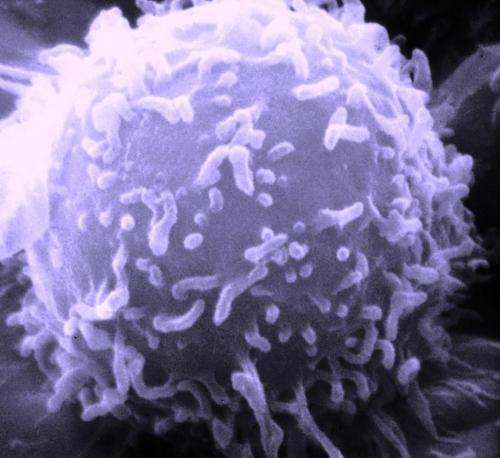Cancer's ability to 'hijack' regulatory mechanism increases metastasis

When skyscrapers go up, contractors rely on an infrastructure of steel beams and braces. Some cancers grow the same way, using a biological matrix from which the tumor can thrive and spread.
Scientists at The University of Texas MD Anderson Cancer Center and The University of North Carolina at Chapel Hill (UNC) have found that one component of this human scaffolding called collagen "cross-links" can determine a tumor's ability to grow and spread. These cross-links of protein complexes enable connective tissue cells known as "stroma" to stiffen, stimulating tumor cell invasion and metastasis.
Study results were published in today's online edition of the Journal of Clinical Investigation.
Collagen is the most common type of scaffolding protein, contributing to tissue strength. Various aspects of collagen metabolism do not function normally in cancers originating in epithelial tissues and have been an area of intense study.
The MD Anderson/UNC team studied two collagen cross-links, HLCC (hydroxylysine aldehyde-derived collagen cross-links) and LCC (lysine aldehyde-derived collagen cross-links) in mice and human epithelial lung cancer specimens. UNC team member Mitsuo Yamauchi, Ph.D., found that HLCCs are most commonly found in skeletal tissues, while LCCs are normally seen in soft tissues.
"We observed that tumor stroma had higher amounts of HLCC and lower amounts of LCC than what is found in normal tissue," said Jonathan Kurie, M.D., professor, Department of Thoracic/Head and Neck Medical Oncology. "Expression of the gene LH2 or lysyl hydroxylase 2 in tumor cells increased the HLCC-to-LCC ratio in tumor stroma and enhanced tumor stiffness leading to metastasis. These findings suggest that the types of collagen cross-links in cancer may play a crucial role in regulating stromal stiffness and determining tumor cell metastatic fate."
Because LH2 enhances tumor cells' ability to metastasize, it functions as a regulatory "switch." Thus, LH2 is able to control the relative abundance of biochemically distinct types of collagen cross-links in the tumor stroma, said Kurie. This finding has therapeutic potential because the enzymatic activity of LH2 might be inhibited selectively with small molecules that bind to LH2.
"Our investigation presented the first evidence that the types of collagen cross-links in tumor stroma are important in determining stromal stiffness and tumor cell metastatic potential," said Kurie.

















